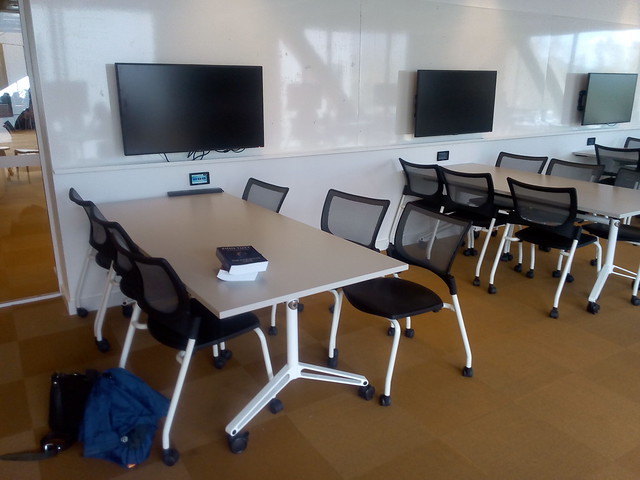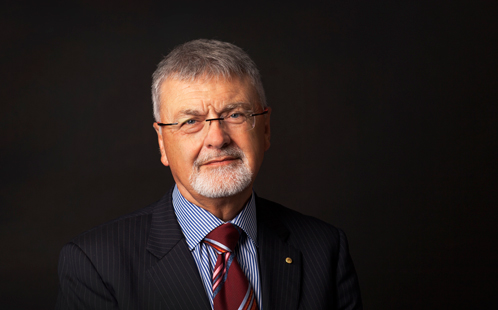The organizers first asked for an abstract (below) and then a 5 to 8 minute video. The videos will be made available two weeks before the symposium. On the day, there are one hour sessions scheduled with five "papers" each, so about ten minutes per paper. Each presenter has been asked to include two or three questions, or statements, to promote discussion. This is an interesting attempt to translate the symposium format to the online world.
In a traditional academic symposium, the presenter reads their entire paper word by word. With a literate writer, who is also an engaging speaker, on an interesting topic, this can be spellbinding, but often it is very tedious. It will be interesting to see if the online format, with pre-recorded videos and the questions is successful in creating a useful discussion.
Higher Education in the Post-pandemic World
Mr Tom Worthington, Honorary Lecturer, Research School of Computer Science, The Australian National University
Abstract
Like many educators, my world changed suddenly in early 2020. I was called to an emergency meeting of the staff of the Australian National University, College of Engineering and Computer Science. We were told that due to COVID-19 many of our international students would be unable to get to campus: could we teach them online? There was a moment of shocked silence, then a roar of questions: “How many? How long for? Will they have Internet access? What about assessment?” It happened for my Masters of Education I looked at how to provide online education to international students at a research intensive university. Also I had worked in emergency planning at the Australian Department of Defence, so had some relevant experience. But it has been a challenging year. What are the lessons learned for educating professionals online? How will this change higher education for domestic and international students into the future?
Shift to Remote Work and Study in March 2020
"The advice from our ANU medical experts is clear: to control the spread of COVID-19 we must take tough action ... so effective tomorrow Thursday 26 March, all our campuses will shift to remote work and study." From the Vice Chancellor of the Australian National University, Professor Brian P. Schmidt AC FAA FRS, 25 March 2020.
On 6 February 2020 I attended an emergency staff meeting at the Australian National University where we were asked if we could quickly switch to teaching online. Some of our students and staff were overseas so unable to return to campus. The Vice Chancellor announced first a "pause", then a wholesale shift to online teaching and working from 26 March.
- Course materials and assessment using the existing Moodle Learning Management System
- Project group work using the existing project tools, such as Slack
- Face to face student/staff interaction replaced with video conferencing (Zoom).
Higher education after COVID-19: Online Plus Campus
 |
| Wall mounted LCD screens & desks on wheels at ANU Marie Reay Teaching Centre |
One possible future for higher education is Online Plus. There can still be campuses with classrooms, but with flexible flat floor rooms, like those in the the Australian National University's Marie Reay Teaching Center. The core of the curriculum will be online for delivery in asynchronous mode, so a typical student can spend about 80% of their time off campus, learning while working anywhere the world.
Pathways to Work, Training and Further Education
The Degree of the Future is Like a Car Platform
 |
| MQB Platform for VW, Audi, SEAT, Škoda, coupes, hatchbacks, saloons, station wagons, convertibles, MPVs, SUVs, and panel vans (Ra Boe / Wikipedia) |
Global Professional Standards
 |
| Excerpt from ACS Certified Professional Certificate |
Synchronous learning in an asynchronous matrix
 |
| Fighting Pandemics virtual hackathon, August 8, 2020, by the ANU Humanitarian Innovation Society (ANU HISoc), with the Clinton Global Initiative University and IBM |
 |
Infographic: Learning |
References
- Chandran, R. (2010, May). National University of Singapore's Campus-Wide ELearning Week. In Global Learn (pp. 2062-3302). Association for the Advancement of Computing in Education (AACE). URL https://cpb-us-w2.wpmucdn.com/blog.nus.edu.sg/dist/0/119/files/2011/03/national-university-of-singapores-campus-wide-elearning-week.pdf
- Shergold P., Calma, T., Russo, S., Walton, P., Westacott, J., Zoellner, J. and O’Reilly, P. (2020, 17 June). Looking to the future – Report of the review of senior secondary pathways, into work, further education and training, for the Education Council of the Council of Australian Governments (COAG). URL https://uploadstorage.blob.core.windows.net/public-assets/education-au/pathways/Final%20report%20-%2018%20June.pdf
- Worthington, T. (2020). The Higher Education Whisperer on COV-19 (Blog). URL https://blog.highereducationwhisperer.com/search/label/COVID19
- Worthington, T. (2020, April). Responding to the Coronavirus Emergency with e-Learning, Athabasca University. Video URL https://youtu.be/CUiVH_g4PL4 Text URL https://blog.highereducationwhisperer.com/2020/04/responding-to-coronavirus-emergency.html
- Worthington, T. (2020, June). Blend and Flip for Teaching Communication Skills to Final Year International Computer Science Students. Paper accepted for the IEEE International Conference on Teaching, Assessment and Learning for Engineering (TALE), 10-13 December 2019, Yogyakarta, Indonesia. URL https://openresearch-repository.anu.edu.au/handle/1885/204833
- Worthington, T. (2018, December). Blended Learning for the Indo-Pacific. In 2018 IEEE International Conference on Teaching,Assessment, and Learning for Engineering (TALE) (pp. 861-865). IEEE. URL https://openresearch-repository.anu.edu.au/handle/1885/148733
- Worthington, T. (2017). Digital Teaching In Higher Education: Designing E-learning for International Students of Technology,Innovation and the Environment (ebook). URL http://www.tomw.net.au/digital_teaching/
- Worthington, T., & Wu, H. (2015, July). Time-shifted learning: Merging synchronous and asynchronous techniques for e-learning. In 2015 10th International Conference on Computer Science & Education (ICCSE) (pp. 434-437). IEEE. URL http://hdl.handle.net/1885/13554
- Worthington, T. (2014, August). Chinese and Australian students learning to work together online proposal to expand the New Colombo Plan to the online environment. In 2014 9th International Conference on Computer Science & Education (pp. 164-168). IEEE. URL: https://openresearch-repository.anu.edu.au/handle/1885/11724
- Worthington, T. (2012, July). A Green computing professional education course online: Designing and delivering a course in ICT sustainability using Internet and eBooks. In 2012 7th International Conference on Computer Science & Education (ICCSE) (pp. 263-266). IEEE.
The video contains images that were used under a Creative Commons License. https://link.attribute.to/cc/1559254



No comments:
Post a Comment